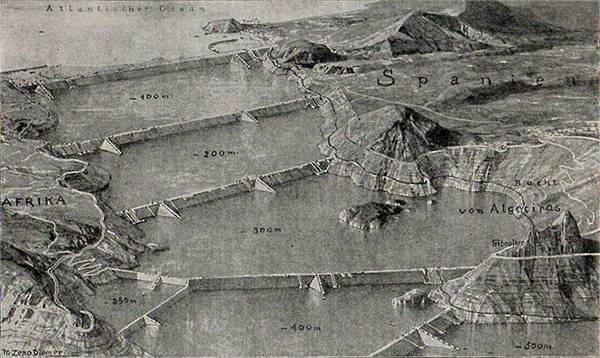
Herman Sörgel thought big. In the 1920s the German architect proposed damming Gibraltar and draining the Mediterranean to unite Europe and Africa into a new supercontinent. The century-long project would create land, food, and power to support an industrial economy to rival those of Asia and the Americas, and it would provide Lebensraum in North Africa for an overpopulated Europe.
The Nazis had no interest in Sörgel’s idea, but he found support among leading engineers both before and after the war. In a Zürich speech in 1932, architect Erich Mendelsohn pressed for a supranational New Deal that would unite Europe in “productive technical world tasks,” and the Atlantropa Institute persisted until 1960, eight years beyond its founder’s death.
In 1977 Popular Mechanics evaluated the plan and found it would require a dam 18 miles long and up to 1,000 feet deep and 1,500 feet wide at its base. The volcanic Mediterranean seafloor, relieved of all that weight, might react in eruptions and earthquakes, and the sea level everywhere else in the world would rise by three feet. “Worst of all, England would no longer control the Straits of Gibraltar,” the editors concluded drily. “Well, you can’t have everything.”
(Thanks, Michael.)
